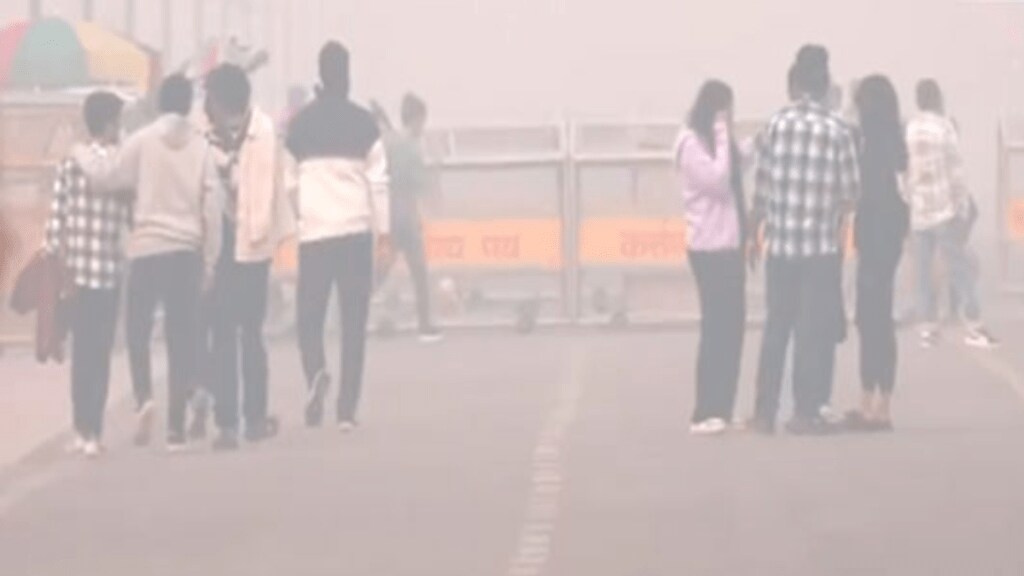The air quality in Delhi plummeted to alarming levels on Monday morning as the national capital was blanketed in thick smog. The Air Quality Index (AQI) recorded at 7 AM by the Central Pollution Control Board (CPCB) stood at 483, categorizing the air quality as “severe plus.” This dramatic deterioration in air quality has prompted urgent action from authorities, with Delhi experiencing a host of severe environmental concerns.
Toxic Foam in Yamuna, Breathing Difficulties for Residents
In Kalindi Kunj, toxic foam was observed floating on the Yamuna River, exacerbating the already hazardous conditions. Local residents expressed growing concerns over the severe air pollution, with many experiencing irritation in the eyes and difficulty in breathing. A long-time resident shared, “This (air pollution) causes burning in the eyes, breathing difficulties, cough, and cold. Pollution is very high here… We are habituated now, but newcomers would fall ill immediately.”
The heavy smog also affected transport in the city. At Delhi International Airport, low visibility procedures were activated as a precaution. However, Delhi Airport Limited (DIAL) assured that all flight operations were normal, and passengers were advised to check with airlines for the latest updates.
The Graded Response Action Plan (GRAP) has been invoked to manage the worsening air quality in Delhi and NCR. Stage-IV of GRAP, known as “Severe Plus,” includes a range of stringent measures to reduce pollution. The Stage-IV action plan, which came into effect at 8:00 AM on Monday, bans non-essential truck traffic from entering Delhi, with exceptions for trucks carrying essential goods. The plan also restricts light commercial vehicles (LCVs) registered outside Delhi, excluding those powered by electric, CNG, or BS-VI diesel engines.

